|
This is my dynamic, frequently updated homepage. This is a NewsLog, also known as a WebLog or Blog.
Everything is evolving, so don't assume too much.
People to watch:
Adina Levin
Andrius Kulikauskas
Britt Blaser
Catherine Austin Fitts
Chris Corrigan
Clay Shirky
Dan Gillmor
Dave Pollard
David Allen
David Weinberger
Dewayne Mikkelson
Dina Mehta
Doc Searls
Elisabet Sahtouris
Elizabeth Lawley
Euan Semple
Florian Brody
Frank Patrick
Gen Kenai
George Dafermos
George Por
Graham Hancock
Greg Elin
Hazel Henderson
Heiner Benking
Inspector Lohman
Jean Houston
Jerry Michalski
Jim McGee
Jim Moore
John Abbe
John Perry Barlow
John Robb
Joi Ito
Jon Husband
Jon Lebkowsky
Jon Udell
Jonathan Peterson
Judith Meskill
Julian Elvé
Julie Solheim
Kevin Marks
Lawrence Lessig
Leif Smith
Letecia Layson
Lilia Efimova
Lisa Rein
Marc Canter
Mark Oeltjenbruns
Mark Pilgrim
Mark Woods
Martin Dugage
Martin Roell
Mary Forest
Matt Mower
Max Sandor
Michael Fagan
Mike Owens
Mikel Maron
Mitch Kapor
Mitch Ratcliffe
Nathalie dArbeloff
Netron
Noam Chomsky
Paul Hughes
Peter Kaminski
Phil Wolff
Philippe Beaudoin
Ray Ozzie
Raymond Powers
Rebecca Blood
Roger Eaton
Roland Tanglao
Ross Mayfield
Scott Lemon
Sebastian Fiedler
Sebastien Paquet
Skip Lancaster
Spike Hall
Steven Johnson
Stuart Henshall
Thomas Burg
Thomas Madsen-Mygdal
Thomas Nicholls
Timothy Wilken
Todd Suomela
Tom Atlee
Tom Munnecke
Tom Tomorrow
Ton Zijlstra
Lionel Bruel
Loic Le Meur
Nancy White
Mark Frazier
Merlin Silk
Robert Paterson
Colby Stuart
Nova Spivack
Dan Brickley
Ariane Kiss
Vanessa Miemis
Bernd Nurnberger
Sites to watch:
Action without borders
BoingBoing
Co-intelligence Institute
Disclosure Project
Disinfopedia
Disinformation
Edge
Electronic Frontier Foundation
Explorers Foundation
Forbidden Science
Free Expression Network
Friendly Favors
FutureHi
Global Ideas Bank
Greater Democracy
HeadMap
Imaginify
Independent Media
Manufacturing Dissent
MetaFilter
Nanodot
Smart Mobs
ThoughtsOnThinking
WorldChanging
YES Magazine
Absara
Collective Intelligence
Collective Web
Do No Harm
Emergent by Design
Escape Velocity
Junto
NotThisBody
Openworld
Rhizome
Space Collective
Webcamorama
French:
Emmanuelle
Manur
Elanceur
Loeil de Mouche
IokanaaN
Blog d'Or
Le Petit Calepin
GeeBlog
Absara
Guillaume Beuvelot
Ming Chau
Serge Levan
Jean Michel Billaut
C'est pas Mécanique

I live in Toulouse, France where the time now is:
02:44
Unique Readers:
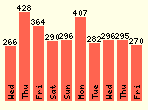
Primarily
Public Domain
Everything I've written here is dedicated to the
Public Domain.

The quotes from other people's writings, and the pictures used might or might not be copyrighted, but are considered fair use. Thus, overall, this weblog could best be described as being:
Primarily Public Domain. |
Syndication:
 ![Validate my RSS feed [Valid RSS]](http://www.newciv.org/pic/valid-rss.png)
|
| Monday, June 4, 2007 |  |
|
|
|
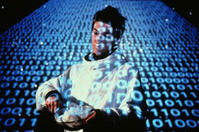 Learning is an interesting subject. How do we know we're learning something? How do we know what to learn? How do know when we've learned it? But, maybe more basic, how do we even manage to pay attention to what is there to learn? How do we notice what we're presented with? Learning is an interesting subject. How do we know we're learning something? How do we know what to learn? How do know when we've learned it? But, maybe more basic, how do we even manage to pay attention to what is there to learn? How do we notice what we're presented with?
Say you're reading a book, or you're listening to a presentation, or you have a conversation. How good are you at actually remembering even a small fraction of what was said? I know I'm pretty bad at it. Even if I've read a book and enjoyed it, can I say more than a handful of sentences about what it said?"I took a speed-reading course and read War and Peace in twenty minutes. It involves Russia." --Woody Allen Even if you took 3 weeks to read "War and Peace", how much more can you really say?
Part of the problem is that books and talks are just a lot of words. They're strung together into sentences, and we might think we understand them, but what are we taking with us?
I've been listening to various memory improvement courses recently. I didn't really mean to, but I just happened to run into them, as I was downloading some other stuff. And another subject I'm interested in is metaphor - how meaning sometimes is transferred much more effectively with a story or a metaphor than with a lot of words that try to teach or persuade.
As to memory, one good piece of advice is that to remember stuff we need to have a framework to put it in. The more you already have a grid of things you know, the better you can put new things into it. An average student in history class might just hear a bunch of seemingly random dates and names and places. But a historian would have a grid in their mind that already connects a lot of dates and names and places together in a coherent framework, and the new information would be many times more meaningful, and he'd be much more likely to remember it, because he has hooks to attach it to. Learning is a lot less likely if there's nothing to relate it to.
As to stories and metaphors, they're very compact ways of storing information. We have an instinctive way of understanding and remembering things that fit together as a story. We know how stories roughly are supposed to work. Like a fairy tale. There might be a protagonist who has some kind of objective, and he runs into various obstacles, and he overcomes them, just barely. We understand that deeply and non-verbally. If we watch a movie, we somehow know if it is satisfying, if the story evolves right, or if something is missing. And we'd be able to re-tell that story without too much trouble, if it is coherent. And even if we didn't remember it all right away, we could piece it together.
That "a picture is worth a thousand words" is a related phenomenon. If we can see how something fits together, we can store it in a much more compact and transportable form in our minds than if we had to remember lists of otherwise disjointed words and sentences.
We have a lot of different kinds of perceptions. We see, we hear, we feel stuff. The very best types of learning connect several or all of these together. We've heard something, and we can talk about it, but we also see it, and we can show it. We've experienced it, and we feel it, and we can make somebody else experience it. And the words are really only a small portion of this, and possibly the least coherent. And yet we often mistakenly assume that if the words have been transferred, the speech delivered, the book read, that this constitutes communication and learning.
So, if you don't control the mode of presentation, what can you at least do to better receive and organize what you were presented with?
- you can take notes
- you can draw a mind map
- you can try to summarize it
- you can discuss the subject
- you can go over it several times
- you can experience it in several different formats, if available: text, audio, video, slides, etc.
An old piece of advice for speakers is: "First you tell them what you're going to tell them, then you tell it to them, and then you tell them what you just told them". Another angle on that is that a really good presentation will tell you the same thing in various formats, and various chunk sizes. There will be a summary, a conclusion, an exploration of the details. There will be visual aids. There will be the presenter's non-verbal queues, like tone of voice and body language. There will maybe be some kind of personal experience, like an exercise. And if it works out really well, all of those are saying the same thing, and supporting each other. They form a self-consistent whole. That's coherence, or congruence. Most presenters don't succeed perfectly in all of that. But even if they don't, you might be able to fill in some of the missing pieces yourself.
- before reading a book, you could look through the table of contents, and page through it, getting an idea of what it is about.
- while reading it, you can make your own notes or drawings of what you're picking up.
- you can find your own examples or counter-examples
- you can find analogies or metaphors. "That is just like ..."
- you can translate it into another medium.
- you can try if you can summarize what the point is.
Any kind of presentation or text will have some kind of structure to it. It might or might not be a good structure, and it might or might not be helpful, but normally there's something there. And there will always be different types of elements. Are we presented with facts, beliefs, opinions, examples, intentions, attempts to persuade, filler material, etc., and which is which? It might be easy to miss if one doesn't somehow evaluate and organize the materials along the way. There might have been just 3 crucial points that the speaker or writer wanted to convey, but if you didn't notice which they were in between all the other stuff, somebody might be wasting their time a little bit.
I'm certainly no master in this. Rather, I notice that way too many things I potentially am very interested in are passing right through my head without sticking to anything, and that's a bit of a waste.
[ Knowledge / learning | 2007-06-04 13:46 | | PermaLink ] More >
|
|
|
|
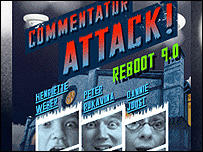
"Everyone that is doing well, and the greatest pattern of Web 2.0, is creating value by sharing control" --Ross Mayfield, SocialText
Nice writeup at BBC about Reboot by Jem Stone, who was one of the participants:The future of the web is being debated at Reboot 9.0, a leading European grassroots technology and design conference in Copenhagen.
The 500 web developers, entrepreneurs, and designers that have descended on a leafy suburb of the Danish capital have been contributing to a growing trend in technology conferences by effectively collaborating together to produce the conference itself.
Reboot was one of the first events of its type to try and adapt open source software themes such as collaboration and openness to the complex task of organising a conference.
Addressing the young laptop-toting audience Thomas Madsen-Mygdal, the 29-year-old web developer who has been producing the event since it began in 1998, insisted in his opening that "it's not us that makes [Reboot] great, its you".
Now nine years on, a large number of public gatherings of new media developers tend to self organise events in this way, such as Bar Camp and Unconference.
It is what Russell Davies, the London advertising blogger behind June's Interesting07, calls an "enthusiast generated" event.
This year's conference theme is Human? with many speakers grappling with such deep philosophical queries as what it means to be human. One session was called Humanism 101.
Understanding human behaviour and how to adapt those behaviours to technology and the web rather than the reverse is rare for technology devotees...
[ Information / reboot9 | 2007-06-04 15:50 | 0 comments | PermaLink ]
|
|
| Sunday, June 3, 2007 |  |
|
|
|
 I don't jump on all technofads right away. Like, I couldn't really see the point of Twitter. Why would I want to get an SMS about whatever somebody I know is having for lunch? I wouldn't have to, of course, as one could configure it differently. But the horror of that thought, to be woken up in the middle of the night to hear that somebody on the other side of the world is standing in line at McDonalds, kept me from even looking at it. And of course I didn't quite get it. It is indeed an excellent idea. I don't jump on all technofads right away. Like, I couldn't really see the point of Twitter. Why would I want to get an SMS about whatever somebody I know is having for lunch? I wouldn't have to, of course, as one could configure it differently. But the horror of that thought, to be woken up in the middle of the night to hear that somebody on the other side of the world is standing in line at McDonalds, kept me from even looking at it. And of course I didn't quite get it. It is indeed an excellent idea.
The cool idea is microblogging. Instead of having to feel obliged to write whole articles on important subjects with well reasoned arguments, one can post one-line snapshots. Where one is, what one is doing, what one is thinking, etc. Which one can do often and easily, from the web, from IM programs, by SMS. And people who know you can keep on eye on your activities and thoughts, whenever and however they feel like it.
Personally, I do sometimes get blogging anxiety, in the form of thinking that if I post something, it has to be of a certain volume and quality, particularly if I haven't written anything for a little while. In the meantime I've been doing lots of things, but maybe nothing that overcame my threshold of being bloggable. But for a microblog, the threshold is much lower. That I'm sleeping or eating breakfast is perfectly newsworthy, in part because the one-liner about it isn't going to bother anybody, and on the contrary it puts me on the map as a blip. And maybe I do get a brilliant idea after breakfast and post that too.
Twitter is the most well-known service, but I like Jaiku better. Quite a few more useful features. And it seems to be more popular with the European crowd, and we've sort of seen it be born over the last several Reboot conferences.
I'm ffunch on Jaiku. And also on twitter, although I'm not likely to use that very much.
It only gets fun when you have a list of contacts of course. But then it is ambient intimacy, alright. You can easily maintain a peripheral awareness of what a whole bunch of your friends are up to, without spending too much energy on it.
[ Information | 2007-06-03 14:34 | 0 comments | PermaLink ]
|
|
|
|
How does one best capture what one can take away from a lecture? One can just somehow process it and internally organize it as one hears it, I suppose. Or one can count on being able to watch the video later. Or one can take notes. But how? I unfortunately missed Stowe Boyd's talk on Flow, a new consciousness for a web of traffic, in order to be in a conversation about owning one's learning path. But Lars Plougmann made his notes in the form of a nice mind map, which you can see below. And when Stowe puts up his slides, I guess I can piece the point together. Mind maps is a good way of keeping notes.
[...Later] Video of Stowe's presentation here.
[ Information / reboot9 | 2007-06-03 15:35 | | PermaLink ] More >
|
|
| Monday, May 28, 2007 |  |
|
|
|
 Picking from some of the interest presentations and discussions coming up at reboot, Ton Zylstra and Elmine Wijnia will focus on tools for owning your learning path. Picking from some of the interest presentations and discussions coming up at reboot, Ton Zylstra and Elmine Wijnia will focus on tools for owning your learning path.What does it take to be the owner of your own learning path, so that you can reach your goals?
And if we can say something useful about that learning path, does that give us the means to pro-actively shape the social software tools that give us the affordances we need?
Empowering people to be in control of their own lives is we think the single most important thing to reach for.
With social software tools more people than ever are able to share their thoughts and work, and interact with others.
A lot of that development however is technology driven. It is a side-effect of existing changes.
But now we are at a stage that we can turn that around, and start thinking about social software tools in terms of the affordances empowered indviduals really need.
Learning is a continuous activity and primary source of empowerment. Being able to control your own learning path is therefore an important issue. What does it take to own your learning path? That is what we would like to explore in this conversation.
How to know what to learn?
How to know when to learn it?
How to know how to learn it?
How to know when you've learned it?
How to seek out the 'right' social and physical environment to help and allow you to learn?
Working these questions out in more detail will create, we think, a model that allows us to identify the skills and tools individuals need to own their own learning paths. That in turn allows us to look at the landscape of available tools, and start telling the tool smiths where to go next. I like that. Are there really any good tools that support learning in life? For that matter, are there any good tools for supporting ongoing progress and development in some area, or in several areas at the same time? There's project management software if you have a specific business project with targets and deadlines. There are systems for staying organized. Many systems for recording stuff, like blogs and wikis. There are ways of scheduling things, like, of course calendars. But learning? There is course software, for presenting lessons and doing tests and that kind of thing. But for learning in life? I can't think of anything, so that's a great thing to work on.
[ Knowledge / reboot9 | 2007-05-28 22:15 | | PermaLink ] More >
|
|
|
|
 Another reboot subject, Ambient intimacy, with Leisa Reichelt: Another reboot subject, Ambient intimacy, with Leisa Reichelt: 'Ambient Intimacy' is a term I coined recently to describe an ancient effect which has come to the fore with the use of technologies such as Flickr and Twitter. Evan Williams of Obvious (creators of Twitter) recently used this term at the International Conference of Weblogs & Social Media to explain the value that Twitter offers it's users.
My current definition: "Ambient intimacy is about being able to keep in touch with people with a level of regularity and intimacy that you wouldn’t usually have access to, because time and space conspire to make it impossible. Flickr lets me see what friends are eating for lunch, how they’ve redecorated their bedroom, their latest haircut. Twitter tells me when they’re hungry, what technology is currently frustrating them, who they’re having drinks with tonight."
Let's review the history of Ambient Intimacy from non-digital forms, through some interesting research on the use of mobile phones by teenagers in Japan to a reflection of how current technologies support ambient intimacy and what this means for us as technology users and designers. Excellent term. So, yes, Japanese teenage cellphone users, that's a good example. I forgot the numbers, but it is a surprisingly huge amount of SMSes they exchange every day on the average. With a cellphone, you can be in touch with your pals all the time, and you can coordinate all your activities, if you so wish, and keep each other informed. You can move around town, and organize impromptu meetings, and you no longer need so much of a schedule or planned meeting times and places.
I haven't gotten into the twitter thing. For those who don't know, it is essentially that you receive SMSes that tell you little things your friends are doing. What they're eating for lunch, what they're watching on TV, what they're thinking about, or whatever else they'd want to share. I don't know, I think I'd find that a little annoying to receive as SMS. I like the idea that it is visible, though.
Not all types of media are practical for this. Push media like e-mail or SMS or phone calls easily become annoying. I don't want to be contacted and interrupted to be told what somebody's having for breakfast, as I'll probably be asleep. What I wouldn't mind having would be a device that started me off with a global picture of where everybody I know are, and where I very easily could zoom in and see more. So, a global picture first, and then the detail. Doesn't have to start with location. It could be, ok, here's a graphic of what state these 50 people you care about are in. 5 are in meetings, 10 are sleeping, 15 are eating, 10 are commuting, 10 are hidden. And I can then look closer and see what else they're sharing.
Within certain limits, I wouldn't necessarily mind having a webcam on top of my head so I could share what I was doing. I wouldn't leave it on all the time, but a good deal of time, I wouldn't mind. I wouldn't mind a GPS in my pocket that shared my position. Most of the time I wouldn't mind sharing info about what I'm doing. Automated and effortless systems for some of that could replace some of what blogging is about, and also turn it into something else. I probably wouldn't want to share all of it with just anybody, but there will always be people I'd happily let know most of what I do.
Things like that will inevitably happen, as the technologies become available. At the same time we'll need better ways of being selective about what we want and don't want to share, and with who.
[ Culture / reboot9 | 2007-05-28 22:46 | | PermaLink ] More >
|
|
| Sunday, May 27, 2007 |  |
|
|
|

Wow, I wish it really were like that when I lived in Los Angeles. Would have made the city feel completely different. Here you find the bigger version. If you're not familar with L.A., it is not like that at all, it is an elaborate imaginary exercise. L.A. does have a subway, but for most people in the city, it isn't very relevant, because most people live nowhere near a station. I've never even taken a ride on it. I wanted to, I meant to, but strangely didn't get around to it, because there was nothing really useful I could do with it, and it would take a bit of travel to get to a station. Now, if it had been like on the map, I can right away see how I would have used it. For years I commuted from close to where that Verdugo Rd station would be to 7th street in downtown. Took about an hour to get home on the bumper to bumper freeway.
The funny thing is that Los Angeles used to have an electrical rail system very much like the imaginary one. Or, rather, that's not funny at all, it is rather tragic. Take a look at the Red Car line that existed in the early 1900s. You can read its story on Wikipedia. There were various reasons for its demise, including that it didn't work very well and was in need of serious modernization. But a greatly contributing factor was the well-known conspiracy between General Motors and Standard Oil, forming a company that bought up rail lines in order to shut them down and replace them with cars and busses.
(Via BoingBoing)
Now, looking at the current Mass Transit System for Los Angeles, I notice there are new developments since I moved. Like a fast bus line through San Fernando Valley where I lived. But the Map is still very unimpressive compared with cities that have a good mass transit system. Somehow it doesn't feel like a very relevant system. And, wow, while I lived in L.A. I was under the firm belief that there was a subway from downtown to Santa Monica along Wilshire, and I just realize that it never was finished. Strange. I clearly remember when they were working on it, and there's even been movies about it, and it doesn't even exist. Some polical maneuvering held up the funding for it and it was never completed.
[ History | 2007-05-27 01:49 | | PermaLink ] More >
|
|
| Saturday, May 26, 2007 |  |
|
|
|
I finally figured out what had been overloaded my server here for weeks. I had previously noticed that an extraordinary amount of trackback spam is arriving all the time. I had turned off that option for my own blog here, so that trackback would receive a "not found" error. But it was sent by a PHP page, so the server still had to do a bit of processing, which was enough to slow everything down.
My own weblog here is getting 5-10 trackback requests per second, 24-7, all of which are nothing but spam.
I now set up a rewrite filter in Apache, which gives back a "refused" error. The same amount of trackbacks keep arriving, from some kind of botnet of 100s of computers, but this takes much less processor power, so it doesn't matter much.
Trackback used to be a neat feature, allowing weblogs to notify other weblogs that one links to them. But it has been totally useless for quite some time, with the ridiculous amount of phony spam trackbacks.
[ Diary | 2007-05-26 01:52 | 0 comments | PermaLink ]
|
|
|
|
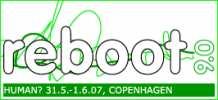 Next week I'll be at Reboot in Copenhagen. The best tech conference I know, and, also since it is in the town I'm from, the one I'm most likely to go to. I go to very few conferences these days, but that's a fine reason for dropping by for a few days. Many great people on the list of participants and speakers, including quite a few coming from the States. Next week I'll be at Reboot in Copenhagen. The best tech conference I know, and, also since it is in the town I'm from, the one I'm most likely to go to. I go to very few conferences these days, but that's a fine reason for dropping by for a few days. Many great people on the list of participants and speakers, including quite a few coming from the States.
[ Diary | 2007-05-26 02:01 | | PermaLink ] More >
|
|
|
|
 Closeup of one of several likely openings into recently dicovered underground caverns on Mars. This one is 100 meters wide. Closeup of one of several likely openings into recently dicovered underground caverns on Mars. This one is 100 meters wide.At its highest resolution of 25 centimeters per pixel, the HiRISE camera can see the detailed shape of the slightly scalloped edge of a hole on the flank of Mars' Arsia Mons (left), but no amount of image enhancement (right) can bring out any further details inside the hole. That means that the walls of the cave are overhanging -- the cave is larger below the ground than the entrance we can see at the surface -- and that it is very deep. Mars' dusty atmosphere produces enough scattered light that "skylight" would illuminate the floor of a shallow cavern well enough for HiRISE to detect it.
The hope for the HiRISE images was that we could see some details from inside the hole. But as you can see by the highly stretched version at right, there is absolutely nothing visible inside that hole. It's black black black black black. HiRISE is a very sensitive instrument, and Mars' dusty atmosphere scatters quite a bit of light around, so there is certainly light entering that cave hole and bouncing around the interior. But it seems that the cave is so big and so deep that almost none of the light that enters the cave comes out. It's deep, and it's big; the hole that we see really is just a skylight on a big subterranean room. How big? We'll never know for sure without visiting it, but I expect that Cushing and his coauthors and the HiRISE team will be crunching the numbers on the illumination conditions and the sensitivity of the camera to put a lower limit on how deep that cave must be for HiRISE to be able to see nothing at all inside it.
Think about that. All these orbiters at Mars, and most of them are just seeing the surface and atmosphere. To be sure, there are two instruments up there -- MARSIS on Mars Express and SHARAD on Mars Reconnaissance Orbiter -- that are probing the shape of the subsurface with ground-penetrating radar. But neither of those instruments have the resolution necessary to tell us what the inside of this cave looks like. It might as well be in the greatest depths of space. Here there be dragons. What's down there? Are there stalactites and stalagmites and crystals, or is it just a vast open room or tunnel? Yeah, might just be something boring, like a parking garage.
[ Science | 2007-05-26 02:26 | | PermaLink ] More >
|
|
| Thursday, April 26, 2007 |  |
|
|
|
 Earlier I was lamenting my lack of success in having a browser that works for me on my Mac. But I hadn't seriously tried OmniWeb, and it was sort of the only remaining browser after Firefox, Opera and Safari. I hadn't given it much attention, because it is the lesser known, and it isn't free. Only $14.95, which is perfectly alright, but that was enough of an obstacle that I hadn't seriously tried it. Earlier I was lamenting my lack of success in having a browser that works for me on my Mac. But I hadn't seriously tried OmniWeb, and it was sort of the only remaining browser after Firefox, Opera and Safari. I hadn't given it much attention, because it is the lesser known, and it isn't free. Only $14.95, which is perfectly alright, but that was enough of an obstacle that I hadn't seriously tried it.
And, as it turns out, OmniWeb is the only browser that solves my showstopping problems. Mainly that if I use the other browsers the way that comes naturally to me, at the end of the day my machine would have slowed to a grinding halt, and I see the spinning beachball for several seconds no matter what I push. There are other things that are nice to have, but that in itself far outweighs all the other concerns.
Part of the secret is that OmniWeb has several separate Workspaces. That is, one can have collections of windows and tabs, and they're kept separate from one another. So, I can have 30 sites open without them all showing at the same time and the one with bad javascript slowing everything down. I see just the windows and tabs I'm working on. When I switch out of a workspace, it still keeps running for an hour or so, so if I went back to it, it would be there instantly. If it is longer than an hour, it would need to load the pages again, but everything would still come back like I left it, rather quickly.
After two weeks of using it, I haven't had that slowdown experience at all. So, they must be doing something right in terms of managing resources.
OmniWeb has a system of "tabs" which aren't like tabs in the other browsers. Not little folder tabs along the top. Rather, they're small snapshots showing in a sidebar to the left. Which is a bit odd as far as tabs go, but it actually works very well.
There'd still be a bunch of things I'd miss from FireFox, like the FireBug javascript debugger, and various other plugins and add-ons for dealing with pictures, showing Google PageRank and things like that. But the other thing that really irritated me with Firefox - that a download of any file would take 10 seconds to start, freezing all activity in the meantime - no problem like that in OmniWeb. Opera and Safari don't have that problem either.
OmniWeb uses the same engine for rendering pages as Safari, the built-in Apple WebKit, which seems to work fine.
[ Diary | 2007-04-26 15:56 | | PermaLink ] More >
|
|
| Wednesday, April 25, 2007 |  |
|
|
|
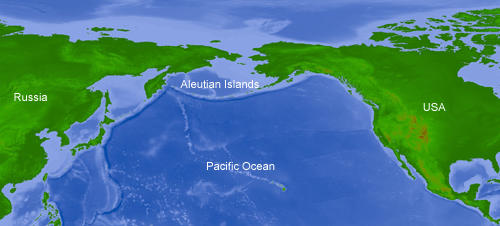
Russia plans to build a $65 billion tunnel under the Bering Strait to Alaska. Cool, finally I'll be able to drive to California, even though it will be a bit long. CNN: The proposed 68-mile tunnel would be the longest in the world. It would also be the linchpin for a 3,700-mile railroad line stretching from Yakutsk -- the capital of a gold- and mineral-rich Siberian region roughly the size of India -- through extreme northeastern Russia, in waters up to 180 feet deep and into the western coast of Alaska. Winter temperatures there routinely hit minus 94 F. (Map)
By comparison, the undersea tunnel that is now the world's longest -- the Chunnel, linking Britain and France -- is only 30 miles long.
That raises the prospect of some tantalizingly exotic routes -- train riders could catch the London-Moscow-Washington express, conference organizers suggested.
Lobbyists claimed the project is guaranteed to turn a profit after 30 years. As crews construct the road and rail link, they said, the workers would also build oil and gas pipelines and lay electricity and fiber-optic cables. Trains would whisk cargos at up to 60 mph 260 feet beneath the seabed.
Eventually, 3 percent of the world's cargo could move along the route, organizers hope Russia's last czar, Nicholas II, approved a similar plan already more than 100 years ago. Hopefully it works out this time.
[ News | 2007-04-25 13:51 | | PermaLink ] More >
|
|
|
|
 Make Magazine has a nice overview article of what open source hardware would look like, and what different layers we'd be talking about. They're focusing on electronics, which probably makes good sense as one of the first fields where it might work. The different layers they're talking about are: Make Magazine has a nice overview article of what open source hardware would look like, and what different layers we'd be talking about. They're focusing on electronics, which probably makes good sense as one of the first fields where it might work. The different layers they're talking about are:- Hardware (Mechanical) diagrams
- Schematics & Circuit diagrams
- Parts list
- Layout diagrams
- Core/Firmware
- Software/API
- Projects
Obviously it is more complicated to open source hardware than software, where you just need to download some code. So, there are many possible projects that open source just some parts, but not others. If you have the diagrams and parts list for some device, you can in principle go and buy the parts and build it, but the components aren't open source, of course. Until the point where you have a nanotech matter compiler, it will always be a bit incomplete. But it sounds like smart people are expanding what is possible.
[ Technology | 2007-04-25 14:01 | | PermaLink ] More >
|
|
|
|
PhysicsWeb. I'm not sure I understand it well, but the scientific discussion seems to be on whether there are hidden variables in the universe that make reality exist in a consistent way, even when nobody's looking at it. And whether the universe is basically local or non-local. "Local" would mean that one can separate events completely from each other, so that they can't instantenously influence other events.Markus Aspelmeyer, Anton Zeilinger and colleagues from the University of Vienna, however, have now shown that realism is more of a problem than locality in the quantum world. They devised an experiment that violates a different inequality proposed by physicist Anthony Leggett in 2003 that relies only on realism, and relaxes the reliance on locality. To do this, rather than taking measurements along just one plane of polarization, the Austrian team took measurements in additional, perpendicular planes to check for elliptical polarization.
They found that, just as in the realizations of Bell's thought experiment, Leggett's inequality is violated – thus stressing the quantum-mechanical assertion that reality does not exist when we're not observing it. "Our study shows that 'just' giving up the concept of locality would not be enough to obtain a more complete description of quantum mechanics," Aspelmeyer told Physics Web. "You would also have to give up certain intuitive features of realism." Sounds like they're saying that experiements really do confirm that reality isn't real unless somebody's looking at it, and that everything is instantanously connected with everything else, so you can't isolate any piece of anything and claim that it has a real existence, separate from everything else, and seperate from who's observing it. I sort of figured as much, but it sounds good if they're rocking the boat a bit by proving it.
[ Science | 2007-04-25 14:17 | | PermaLink ] More >
|
|
| Monday, April 2, 2007 |  |
|
|
|
Scott Adams on Dilbert Blog:I’m reading a great book called “Influence: Science and Practice” by Robert B. Cialdini. It’s full of research and anecdotes about how to influence people. It’s a real eye-opener.
One of the most potent forms of persuasion has to do with people’s innate need to be consistent. Studies show that people will ignore logic and information to be consistent. (In other words, we are moist robots.) According to the research, humans are hardwired for consistency over reason. You already knew that: People don’t switch political parties or religions easily. What you didn’t know is how quickly and easily a manipulator can lock someone into a position.
For example, researchers asked people to write essays in support of a random point of view they did not hold. Months later, when surveyed, the majority held the opinion they wrote about, regardless of the topic. Once a person commits an opinion to writing – even an opinion he does not hold – it soon becomes his actual opinion. Not every time, but MOST of the time. The people in these experiments weren’t exposed to new information before writing their contrived opinions. All they did was sit down and write an opinion they didn’t actually have, and months later it became their actual opinion. The experiment worked whether the volunteers were writing the pro or the con position on the random topic.
Most of the truly stupid things done in this world have to do with this consistency principle. For example, once you define yourself as a loyal citizen of Elbonia, you do whatever the King of Elbonia tells you to do, no matter how stupid that is. And your mind invents reasons as to why dying is a perfectly good life strategy. It's an odd thing. We bend over backwards to appear to be normal and consistent and logical, and in doing so, we tend to become easy to manipulate, and we'll do crazy things without even blinking.
[ Information | 2007-04-02 21:10 | | PermaLink ] More >
|
|
| Saturday, March 31, 2007 |  |
|
|
|
 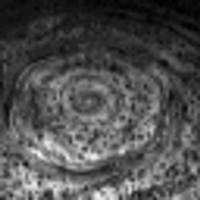 
Strange indeed. A giant hexagon on Saturn's north pole. 25,000 km wide, 60 km deep. Bigger than the red spot on Jupiter. And it seems to be stable, since it was first spotted by Voyager 26 years ago. Nobody seems to be able to explain how it can be hexagonal of all things, with almost regular even sides. I think it is that big bolt you see in the middle, which holds the planet's axis together. Or maybe it is the headquarters of the defense department for the Saturnians.
[ Science | 2007-03-31 00:19 | | PermaLink ] More >
|
|
|
|
Maybe that's a bit of an exaggeration, but, indeed, a report from the World Economic Forum says that in a list of countries rated by how well they've created the infrastructure that fosters technological innovation, progress and leadership, Denmark is number one. Last year the U.S. was number one, but now it is number 7. Denmark is now regarded as the world leader in technological advancement, with its Nordic neighbours Sweden, Finland and Norway claiming second, fourth and 10th place respectively.
"Denmark, in particular, has benefited from the very effective government e-leadership, reflected in early liberalisation of the telecommunications sector, a first-rate regulatory environment and large availability of e-government services," said Irene Mia, senior economist at World Economic Forum. That's a bit surprising, but, hey, cool, I'm proud to be Danish, even if I have nothing to do with it. Business does seem to be doing well in Denmark, and the country is certainly very wired.
[ News | 2007-03-31 00:51 | | PermaLink ] More >
|
|
| Tuesday, March 27, 2007 |  |
|
|
|
 
A guy named Bob has a couple of pictures from when the A380 came to Los Angeles recently. And he gave this nice overview: The Airbus A380, the largest passenger plane in history, landed at LAX (Los Angeles airport) on March 19 2007. This eight-story-tall (80 feet from bottom to the top of the tail), 1.2-million-pound jet- “Airbus 380”, more than 239 feet long, which can carry 555 passengers and has a 261-foot wingspan, was making its inaugural test flight from the Airbus headquarters in Toulouse, France. It carried only 22 crew members, but was full of added instrumentation for the test flight.
An identical A380 (this had about 550 passengers aboard and tested all boarding/flying procedures) landed in New York within minutes of the Los Angeles touchdown. A 380 has two decks.
End of 2007: Singapore Airlines becomes the first carrier to put the A 380 in the air with paying passengers, with about 480 ticket holders; Summer 2009: Lufthansa begin flying the plane with about 549 passengers.
The European made Airbus A 380 produces half the noise of a Boeing 747, mostly because of its state-of-the-art Rolls Royce engine. Its designed to have more than 850 seats in the future if necessary. I see A380s almost every day. They start and land constantly, for testing, and we live next to the incoming flight path. And we know quite a few people who work on it at Airbus. But it is still something new to see it in L.A. Not that this particularly looks more like L.A. than anywhere else.
I ought to feel like Los Angeles was still my hometown too, but somehow I don't. Felt like home when we lived there, and it was even something to be a bit proud of. But every time I landed there in a plane, after having been gone a few weeks, it felt sort of strange. You land into a brown soup of city as far as the eye can see in all directions. And it never felt exactly friendly to arrive in LAX, even if it usually was warm. Long passport check lines, an endless stream of courtesy vans, taxis and police cars, and then out on the wall-to-wall freeways. But after a few days it felt normal again.
[ News | 2007-03-27 12:04 | | PermaLink ] More >
|
|
<< Newer stories Page: 1 ... 6 7 8 9 10 ... 97 Older stories >> |
|

This is a collage of things that catch my eye, things that need to be said, and stuff I really care about
TRUTH
BEAUTY
FREEDOM
LOVE
TECHNOLOGY
|
| Mon | Tue | Wed | Thu | Fri | Sat | Sun |
|---|
| 1 |
2 |
3 |
4 |
5 |
6 |
7 |
| 8 |
9 |
10 |
11 |
12 |
13 |
14 |
| 15 |
16 |
17 |
18 |
19 |
20 |
21 |
| 22 |
23 |
24 |
25 |
26 |
27 |
28 |
| 29 |
30 |
|
|




